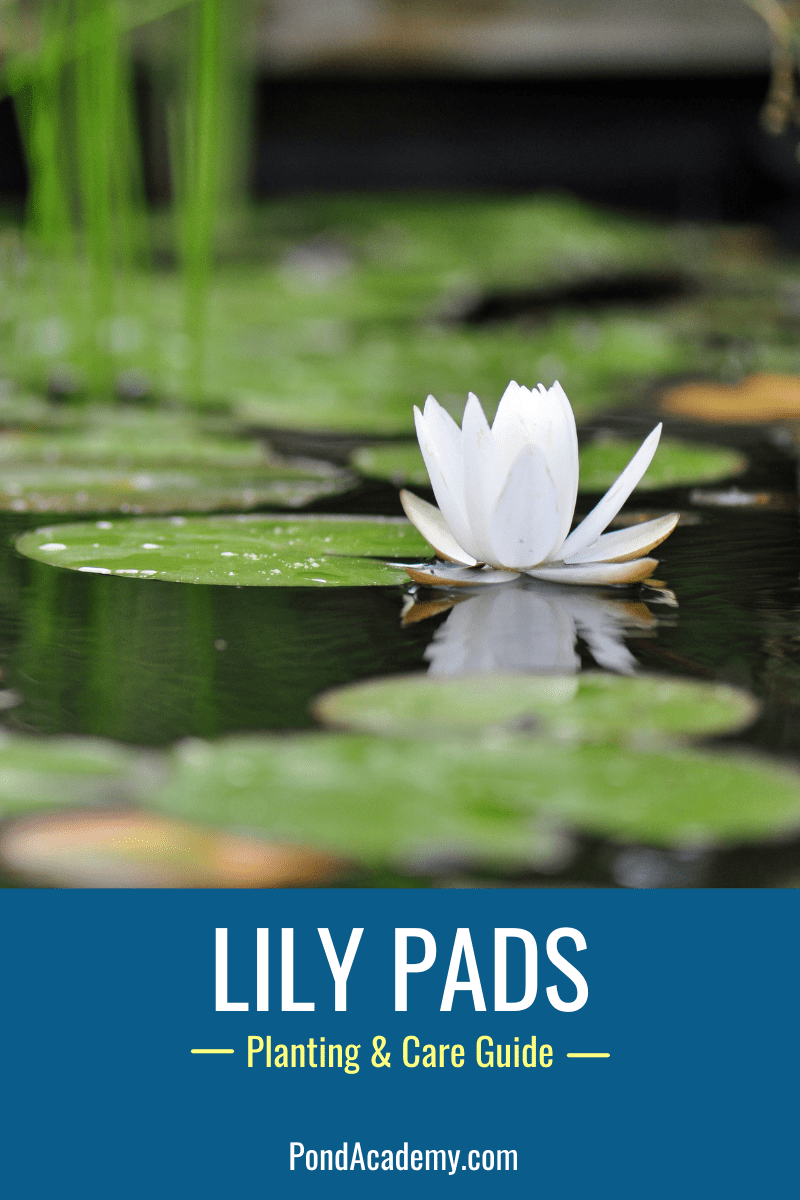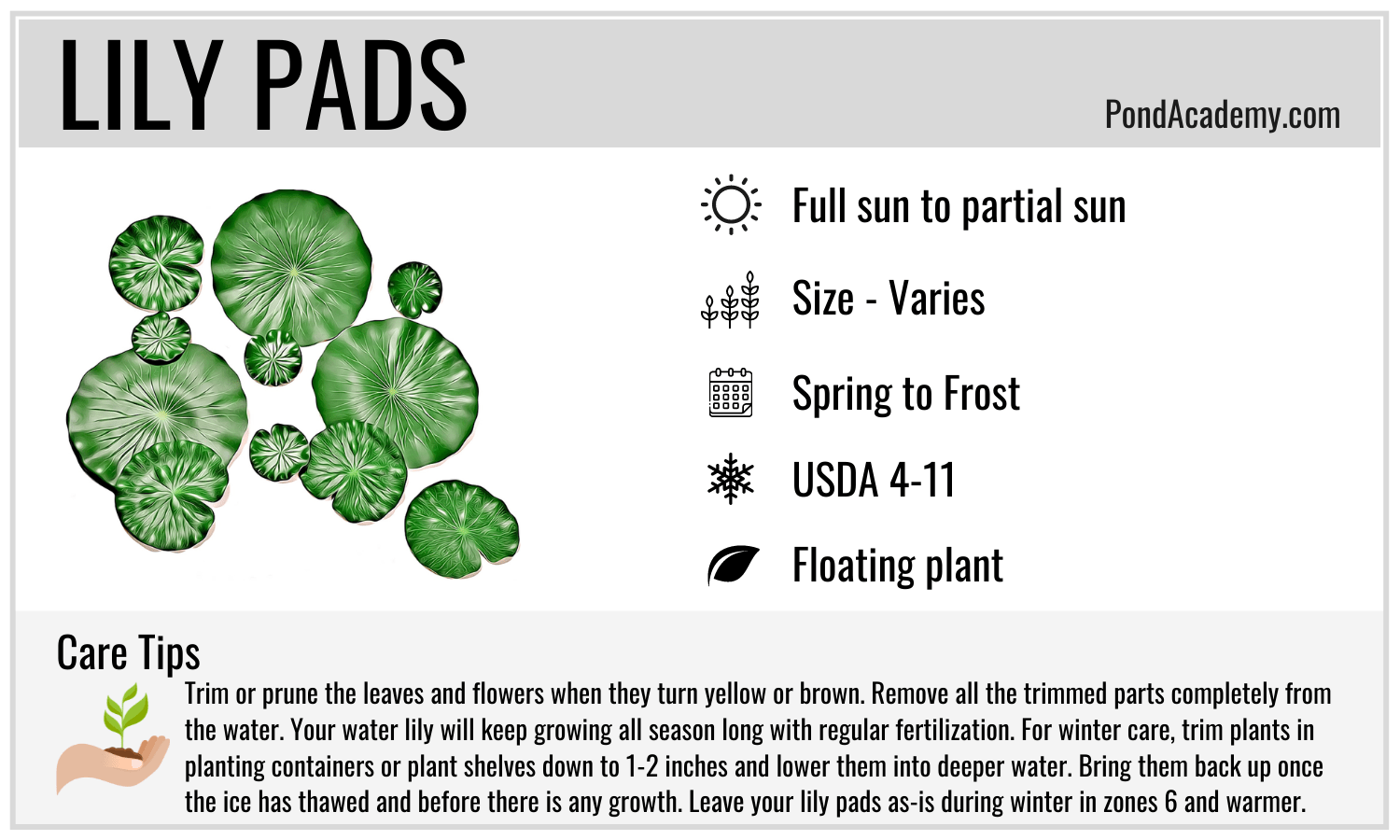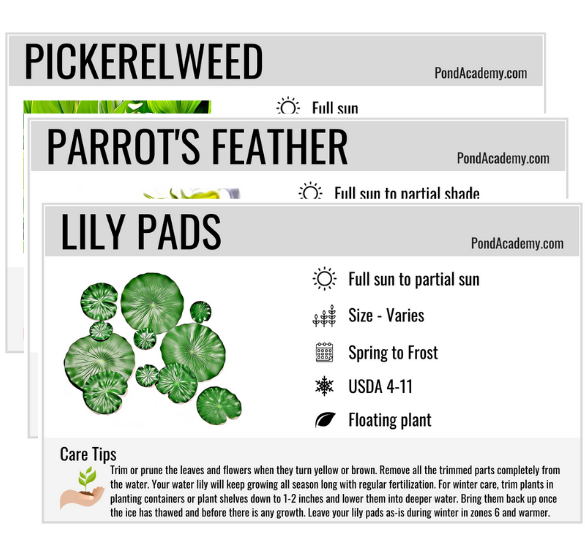Water Lily Pond Plant - Care & Grow Guide
Pond Academy is reader-supported. Buying through links on our site may earn us an affiliate commission. As an Amazon Associate I earn from qualifying purchases.

If you're serious about making your pond more pleasing to the eyes, then hardy Water Lilies (Nymphaea) are the perfect addition!
Aside from the great aesthetic values of the colorful flowers and floating green pads, planting water lilies can also keep your pond healthy. Pond fish and other wildlife stay sheltered under the shade of the plants, and they block out sunlight that fuels algae growth helping to keep pond water clean and clear.
Hardy water lilies can survive in the U.S. Department of Agriculture plant hardiness zones 4 through 11 and are considered perennial plants. However, this depends on the specific cultivar and species.
For instance, the hardy North American species can survive in the colder zones during winter, but the tropical species cannot and must be lifted into an indoor space.
Common Names
Water lily, waterlilies, pond lily
Plant Type
Floating plant
Light Requirements
Full Sun to Partial Sun
Hardiness Zones
USDA 4-11
Bloom
Spring to Frost
Grow Up To
Varies
Flower Color
A range of colors including orange, pink, red, white, yellow, purple, blue
How To Plant Lily Pads In A Pond
The first step in planting lily pads in your pond is to get the right materials. These include aquatic plant fertilizer, planting media, and a planting tub.
Planting Instructions
- Start by filling the planting pot with clay-based planting material and clay/soil mix – 2 inches each.
- Introduce a 3-4 inch layer of aquatic planting media on top.
- The tuber is best planted in a horizontal position, such that you have the base root end positioned near the tub wall, while the growing tip is pointing upwards and towards the center. When placing the tuber into the soil, ensure that the depth is just enough to anchor the tuber while keeping the growing tip above the planting media.
- You may place a light layer of rock or gravel on top of the planting media (this is optional).
- Finally, transfer the planting container into your pond or water garden, with the water surface level at 3-6 inches above the stem’s growing tip.
Get Our Best Pond Tips Sent to Your Inbox for Free!
Join thousands of others and learn from our decades of pond building and maintenance experience! Your pond will thank you!
By subscribing you agree to receive emails from PondAcademy.com. We will always respect your privacy and you can unsubscribe at any time.
Lily Pad Care Guide
It is recommended that you trim or prune the leaves and flowers of the lily pads when they turn yellow or brown. Remove all the trimmed parts completely from the water to minimize any excess organic material in your pond. Your water lily will keep growing all season long with regular fertilization.
For winter care, trim your water lilies that are in planting containers or plant shelves down to 1-2 inches and lower them into deeper water.
If you have submerged your water lily plants for winter, be sure to bring them back up immediately once the ice has thawed and before there is any growth. You may leave your lily pads as-is during winter if you are in zones 6 and warmer.
Tip: If lily pads start to take over your pond, check out our guide on how to get rid of lily pads in a pond naturally.
Lily Pads Care Card
Download our free printable care card for the Lily Pads plant! Click the care card below and save the PDF file to your computer. You can easily print off the 3x5 care card or access it right from your phone. Get all the important information you need to keep your Lily Pads plants healthy and happy!
Plus, we provide a blank card for you to print and fill out yourself. Print it as many times as you like to create cards for all your plants!

Pond Plant Care Card Set







